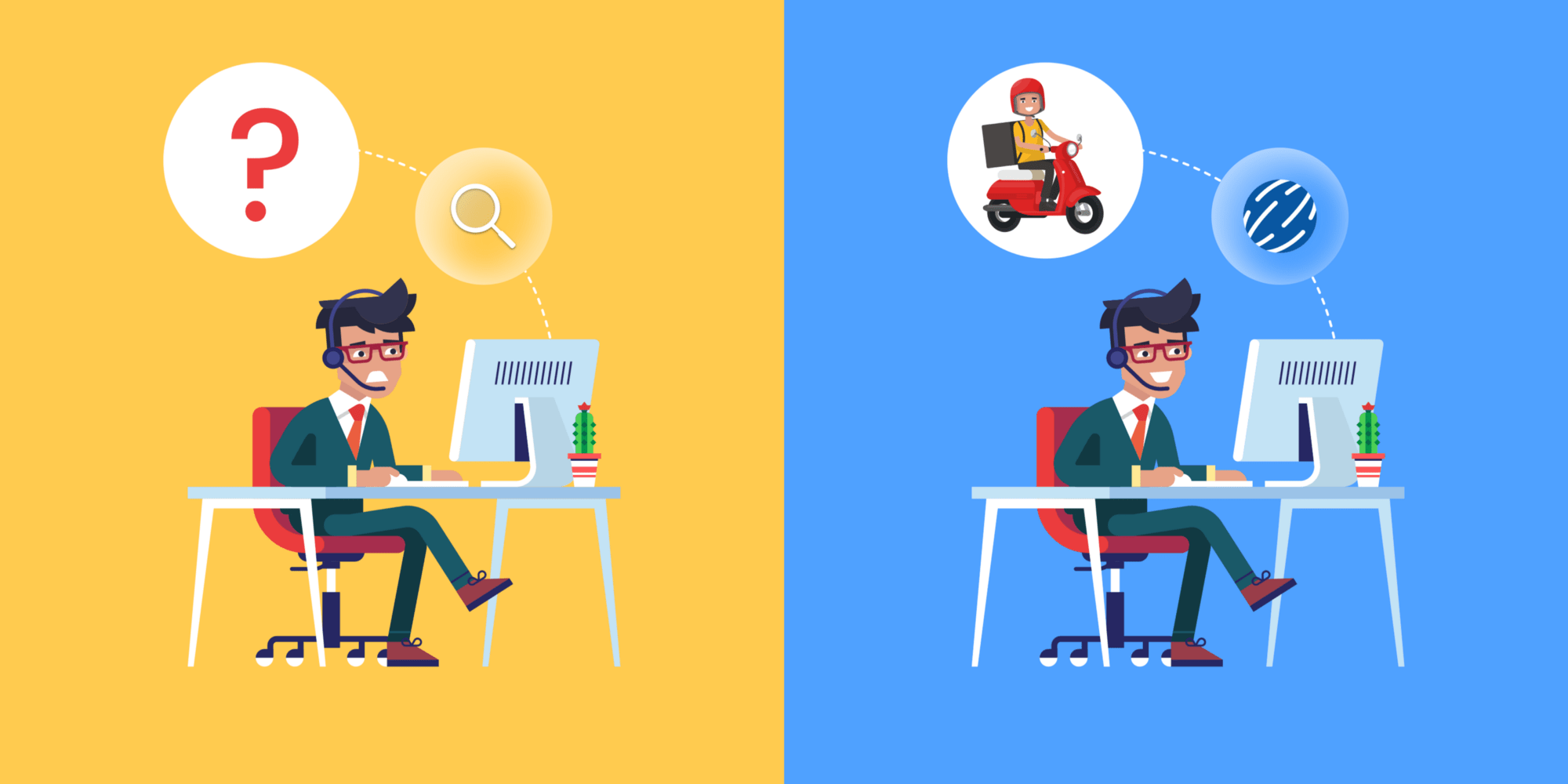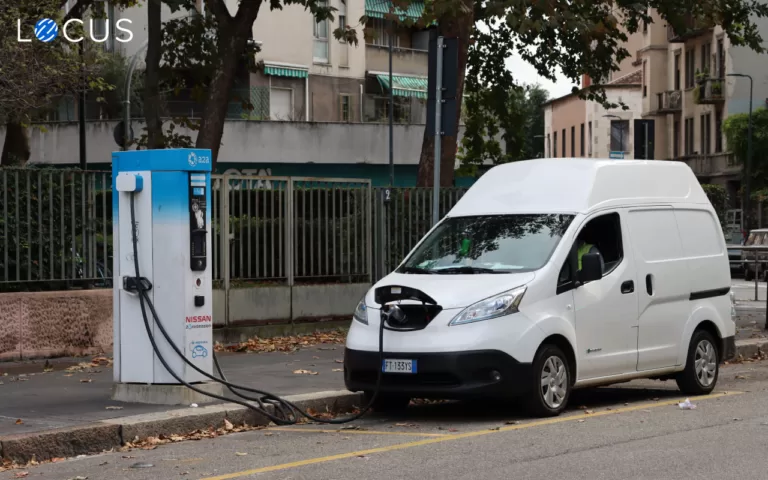Last Mile Delivery Optimization, Route Optimization
How Customer Expectations are Redefining B2B Logistics Businesses in 2021
Jan 19, 2021
5 mins read

The E-Commerce boom has influenced consumer behaviour like never before. Economics taught us that it was the price that drove demand. Now, we are learning how convenience drives demand even more.
2020 was a disruptive year in more ways than one, but remarkably disruptive in how it changed the way people buy and sell. The pandemic has normalized a number of things apart from just wearing masks, social distancing, using sanitizers, it has pushed online shopping, contactless home deliveries, hyperlocal selling, on-demand home services, and a lot more to the forefront.
Moreover, customer experience is defined not just by the convenience of placing orders online, but by a number of other factors — fast deliveries, hassle-free returns, customer-preferred delivery timelines, real-time visibility throughout the order journey as well as the efficiency of the delivery staff and support teams.
While every business may not have the best of all services under one roof, they rely on a number of B2B service providers and supply chains in order to offer a seamless customer experience. It can be 3PL distributors, third-party service providers, skilled partners for special tasks, or even professional customer care teams that enable businesses to cater to customer demands.
Take the case of hotels and hospitality businesses, for instance. They have begun to use on-demand handymen for repair operations. Also, for tourists, they bring in external guides for sightseeing. These guides act as separate entities from these businesses and are called on-demand.
In a hyperlocal delivery model, for example, a supermarket or a fresh foods dealer might employ a logistics service provider to carry out day-to-day delivery operations to customers. A direct-to-consumer retailer might rely on third-party warehouse providers to stock up merchandise in high-density demand locations for faster fulfillment.
Typically, this is done by partnering with B2B service providers for annual or longer contracts. The B2B company has to ensure that service executives are available on the requested date and time. They also have to ensure smooth distribution/delivery operations so as the client company achieves its SLAs. If not, it can pose a problem, because if there is no Plan B, there is no way out, and customer experience is directly impacted.
All these back-end operations are kept from the customers. All that the customer has to do is speak with a front-end staff or place an order online using an application. But when something goes wrong with an order, the veil lifts, revealing the back-end of different B2Bs, who are sometimes unable to support their clients in serving their customers.
As convenience continues to drive customer satisfaction in almost every business space, the pressure on these B2B service providers is huge to ensure speed, efficiency, and professionalism to their clients.
Therein lies the need for a system that could offer the best out of a service provider for improved customer experience. For a B2B logistics business, this translates into a growing need for a robust logistics planning and supply chain management system.
Reshaping B2B Logistics for End Customer Expectations and Convenience
Logistics tech solutions are playing a crucial role in making these backend B2B operations more efficient, thereby improving the client experience as well as end-customer satisfaction.
Accurate Assigning of Duties
With the help of automated task scheduling software, it is possible to assign the right tasks to the right executives, taking into account several real-world factors such as resource availability, skills required for the said task, preferred area of operations, etc.
Customer-preferred Time-slot Deliveries
A time-slot management solution allows a B2B logistics provider to plan daily and even hourly dispatches in a more efficient manner, and offer convenient delivery windows to clients based on customer preferences.

Real-time Tracking
Real-time order tracking and visibility tools allow B2B logistics businesses to monitor their on-ground staff effectively, take preventive measures to ensure timely adherence to SLAs as well as share ETAs with their clients, who can further share order tracing details with their end-customers. This brings greater visibility and transparency throughout the supply chain.
Route Optimization
Whether it’s about delivering goods, or sending service executives to customer locations, route optimization software helps in planning day-to-day dispatches optimally, using the shortest delivery routes, thereby allowing B2B businesses to reach customers faster and minimize fuel costs.
Last-mile Fulfillment
As contactless deliveries become the new normal, technology such as Electronic Proof of Delivery comes in handy. Electronic Proof of Delivery improves the on-site delivery experience and captures delivery confirmation following zero-touch practices.
The term ‘end-customer’ is often veiled in technicality. It is generally used to define the person who actually consumes goods or avails a service. While this may be true in a B2C context, the concept slightly varies in a B2B context.
For a B2B logistics businesses services provider or logistics company, the customer is both the partner client as well as the real ‘end customer’; which essentially means not just one but two parties to satisfy. The right use of logistics tech can help B2B businesses ensure a smooth flow of the supply chain and improve customer experience to stand out among competitors.
Locus offers AI-enabled logistics technology to supply chain enterprises to improve delivery efficiencies and customer satisfaction. Get in touch with our experts for a quick tour of our solutions.

![[Infographics] Prioritize B2B Logistics for Seamless Customer Experience](https://locus.sh/assets/img/infographic/resources/how-b2b-logistics-businesses-drives-customer-experience.jpg)
Infographic by Locus
Share this infographic by using this embed code:
<a href="https://blog.locus.sh/how-evolving-customer-expectations-are-shaping-the-b2b-space/" target="_blank" style="text-align: center; display: block;"><img src="https://locus.sh/assets/img/infographic/resources/how-b2b-logistics-businesses-drives-customer-experience.jpg" alt="[Infographics] Prioritize B2B Logistics for Seamless Customer Experience" style="width:100%;height:auto;max-width:750px;margin:auto;"></a><br/>Infographic by <a href="https://locus.sh/">Locus</a>
Related Tags:

Last Mile Delivery Optimization
Farmer-to-Consumer Direct Supply Chain – The Role of Logistics Technology
From farm to fork, the agri-foods supply chain is typically a long journey with multiple touchpoints. Once harvested in a farmer’s barn, the produce is first sent to primary processors, who clean, cut, package, and sort the crops into appropriate sizes for sale. From the processor, it then moves to wholesalers who distribute the produce […]
Read more
Last Mile Delivery Optimization
Electric Vehicles (EVs) — The Future of Last-Mile Deliveries in 2021 and Beyond
As convenience, delivery speed, and efficiency continue to define customer experience, there is a steady growth in the use of Electric Vehicles to carry out last-mile operations. EVs are eco-friendly and offer some hidden business gains to supply chain enterprises. Read on to catch up on this rising trend that is shaping up the future […]
Read moreMOST POPULAR
EDITOR’S PICKS
SUBSCRIBE TO OUR NEWSLETTER
Stay up to date with the latest marketing, sales, and service tips and news


How Customer Expectations are Redefining B2B Logistics Businesses in 2021